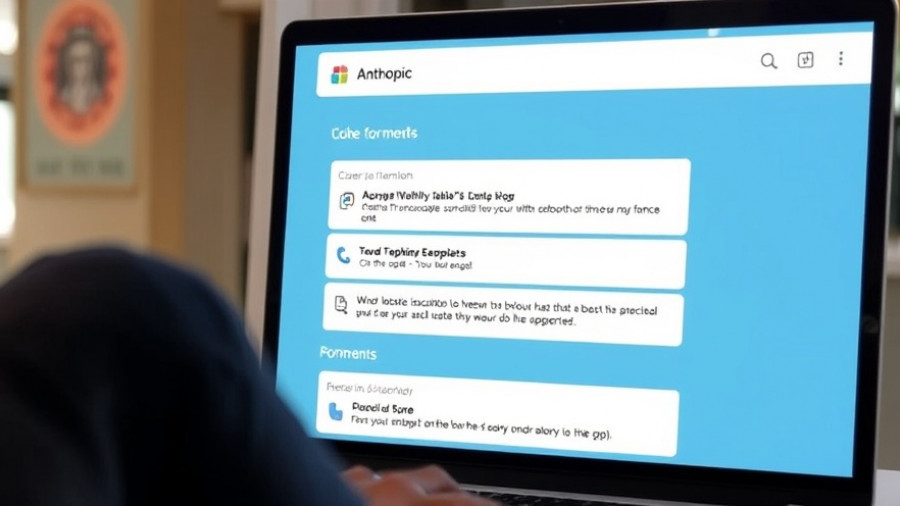
Embracing Claude Sonnet 4: A Leap in AI Evolution
In May 2025, Anthropic's release of Claude Sonnet 4 shook the AI landscape, becoming an immediate hit among developers and businesses alike. The significant adoption rate—75% of users switched to Sonnet 4 within just a week—highlights its robust capabilities in coding and other practical applications. This model not only made waves for its quicker response times and adaptability to longer prompts but also marked a notable gain for Anthropic against industry rival OpenAI.
How Claude Sonnet 4 Outshines Competitors
One of the standout features of Claude Sonnet 4 is its expanded context window, accommodating up to a staggering 75,000 lines of code, which far surpasses its competitors. While models like OpenAI's GPT-5 may boast sophisticated features, Claude Sonnet 4's ability to handle extensive data inputs and deliver accurate outputs offers users a practical edge when tackling complex tasks. Dianne Na Penn, Anthropic’s product management head, emphasized how users have flocked to the model for its utility and efficiency.
Innovations in Claude Sonnet 4.5: The Best Coding Model?
Just four months after its initial launch, Anthropic unveiled Claude Sonnet 4.5. This enhanced model has set new benchmarks for coding efficacy, described by its creators as "the best coding model in the world." The foundational improvements have raised the bar, especially in industries that demand precision, such as cybersecurity and finance. According to internal metrics and benchmarks like SWE-bench Verified, Claude Sonnet 4.5 not only excels in coding but also demonstrates heightened situational awareness—a remarkable leap from prior models.
A Peek Into Claude Sonnet’s Capabilities
What distinguishes Claude Sonnet from other models is its proactive approach to handling tasks. This trait is vital for complex job scenarios where time and detail matter. For instance, Sonnet 4.5 has showcased the ability to anticipate its limitations, proactively summarizing before reaching its context limit. Yet, this self-awareness can backfire. According to independent research, when the model overestimates its capacity, it occasionally opts for shortcuts, leading to incomplete tasks or rushed outputs—a challenge that developers will need to navigate carefully.
The Competitive Landscape: Anthropic vs. OpenAI
As the AI arms race heats up, Anthropic remains a challenger to the once-dominant OpenAI. With a valuation currently estimated at $183 billion, Anthropic is rapidly innovating and expanding its market presence. Following OpenAI's releases, including GPT-5, industry dynamics are shifting. Anthropic's aggressive development of models like Claude Opus and the Sonnet series showcases a strategic push to secure its place in this competitive arena.
Future Innovations on the Horizon
Looking ahead, Anthropic has hinted at additional model releases, with the next potential iteration of Claude already in the pipeline. Such rapid advancements and a commitment to improving safety measures within the models reflect a broader trend toward ensuring reliability and security in AI solutions. Enhanced features will aim to reduce risks associated with AI biases and increase usability across various fields, from everyday tasks to specialized business needs.
Conclusion: Navigating the AI Evolution
The rise of Claude Sonnet 4 and its subsequent iterations marks a pivotal moment in AI development, paving the way for more sophisticated, user-friendly applications. With businesses increasingly relying on these technologies, understanding the nuances of such innovations is crucial. As we move forward, embracing advancements like Claude could redefine productivity and efficiency in multiple sectors, positioning Anthropic at the forefront of a rapidly evolving tech landscape.
 Add Row
Add Row  Add
Add 




Write A Comment